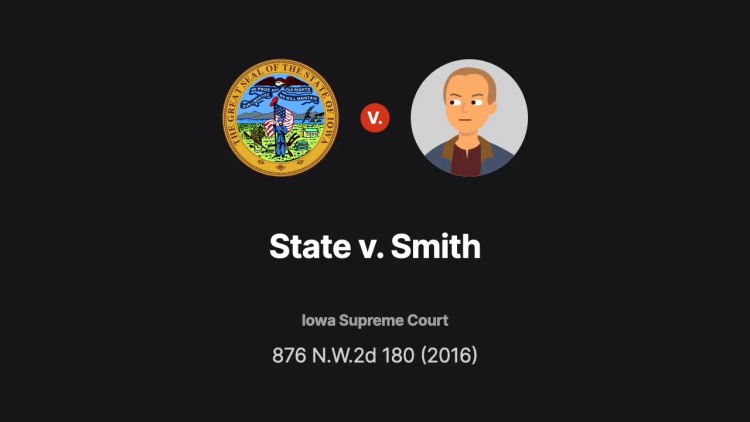State v. Smith
Iowa Supreme Court
876 N.W.2d 180 (2016)

- Written by Kate Douglas, JD
Facts
Police took M.D., who had physical injures, to the emergency room. On separate occasions, a nurse and a doctor asked M.D. what happened. Both times, M.D. said that her child’s father, Trent Smith (defendant), assaulted her. In response to the nurse’s standard screening questions, M.D. stated that she was afraid of someone close to her. The doctor did not diagnose M.D. with any emotional or psychological injuries as a result of domestic abuse. Diagnosis and treatment were limited to M.D.’s physical injuries. M.D. later refused to sign a written statement identifying Smith. The state charged Smith with domestic assault and sought to rely on the statements of identification that M.D. made to hospital personnel to prove that Smith attacked M.D. The state argued that M.D.’s hearsay statements were admissible pursuant to the medical-diagnosis-and-treatment exception to the hearsay rule. The trial court agreed. At trial, M.D.’s nurse and doctor testified that M.D. had identified Smith as her attacker. Neither witness testified that they needed or utilized M.D.’s statements of identification to treat or diagnose M.D. The state did not adduce any evidence that M.D. thought Smith’s identity was relevant to diagnosis and treatment. The jury convicted. Smith appealed to the Iowa Supreme Court, arguing that the trial court erroneously admitted M.D.’s statements of identification. The state argued that under Iowa law, a child-abuse victim’s statements of identification to medical providers were categorically admissible under the medical-treatment exception to the hearsay rule. The state reasoned that this rule should extend to domestic-abuse cases.
Rule of Law
Issue
Holding and Reasoning (Cady, C.J.)
Dissent (Waterman, J.)
What to do next…
Here's why 899,000 law students have relied on our case briefs:
- Written by law professors and practitioners, not other law students. 47,000 briefs, keyed to 994 casebooks. Top-notch customer support.
- The right amount of information, includes the facts, issues, rule of law, holding and reasoning, and any concurrences and dissents.
- Access in your classes, works on your mobile and tablet. Massive library of related video lessons and high quality multiple-choice questions.
- Easy to use, uniform format for every case brief. Written in plain English, not in legalese. Our briefs summarize and simplify; they don’t just repeat the court’s language.








